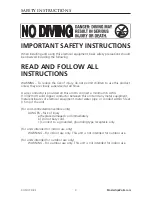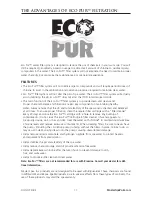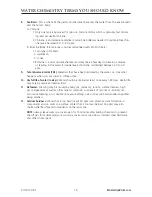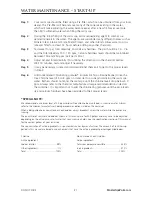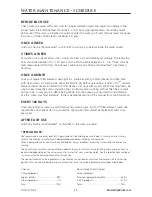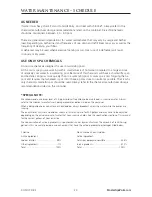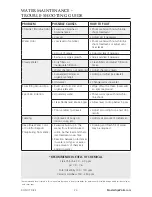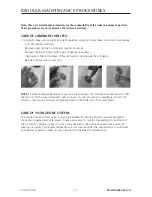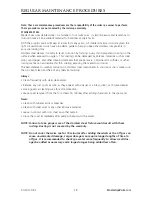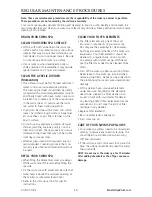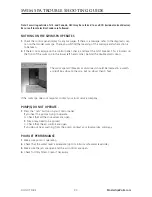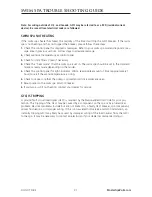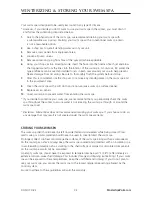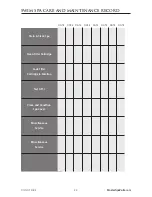
18
DO NOT DIVE.
100
DO NOT DIVE.
WATER CHEMISTRY TERMS YOU SHOULD KNOW
Before jumping into Water Maintenance, here are some terms to help you.
1.
Parts per million, or ppm:
This is a form of measurement used in most pool or spa chemical
readings. Best described as any one million like items of equal size and make up, next to one
unlike item, but of equal size. This would be one part per million.
3.
Total Alkalinity:
This is a measurement of the ability of the water to resist changes in pH.
Put another way, it is the water’s ability to maintain proper pH. Total alkalinity is measured
in parts per million from 0 to 400 plus, with 100 to 120 ppm being the best range for spas.
With low alkalinity, the pH will flip, or change back and forth, and be hard to control. With
high alkalinity it becomes extremely difficult to change the pH.
4.
pH or potential hydrogen:
This is a measurement of the active acidity in the water, or it is
the measurement of the concentration of active hydrogen ions in the water. The greater the
concentration of active hydrogen ions, the lower the pH. pH is not measured in parts per mil-
lion, but on a scale from 0 to 14, with 7 being the neutral. The pH in spas should be ideally
maintained between 7.4 to 7.6. It should never be below 7.2 or above 7.8. With low pH, the
results can be corroded metals, etched and stained plaster stained fiberglass or acrylic, eye /
skin irritation, rapid chlorine or bromine loss, and total alkalinity destruction. With high pH,
the results can be cloudy water, eye / skin irritation, scale formation and poor chlorine or bro-
mine efficiency.
5.
Shocking:
This is when you add either extra chlorine (superchlorinate) by raising the chlorine
level above 8 ppm, or add a non-chlorine /oxidizer (potassium monoperoxysulfate or potassi-
um monopersulfate) to burn off the chloramines or bromamines. A non-chlorine /oxidizer acts
by releasing oxygen in the water, which serves the same function as chlorine. The advantage
to using non-chlorine /oxidizer, is you can enter the water within 15 minutes after application.
Using chlorine, you must wait until the total chlorine reading is below 5 ppm. One thing to
remember, a non-chlorine /oxidizer will not kill bacteria or disinfect.
6.
Sequestering:
This can be defined as the ability to form a chemical complex which remains in
solution, despite the presence of a precipitating agent (i.e. calcium and metals). Common
names for sequestering chemicals are; minquest, stain and scale control, metal-x, spa defend-
er, spa metal gone, (etc.).
7.
Filtration:
Filters are necessary to remove particles of dust, dirt, algae, etc. that are continu-
ously entering the water. If the swim spa is not operated long enough each day for the filter
to do a proper job, this puts a burden on the chemicals, causing extra expense. Filtration time
will depend on the water capacity, pump and filter size and, of course, bather load. Spare
filter cartridges should be kept on hand to make it easy to frequently clean the cartridge
without the need for a long shut down. This will also allow the cartridge to dry out between
usages, which will increase the cartridge life span as much as twice. Replace the cartridge
when the pleats begin to deteriorate. Cartridge cleaning should be done a minimum of once
a month. More often with a heavy bather load.
MasterSpaParts.com

